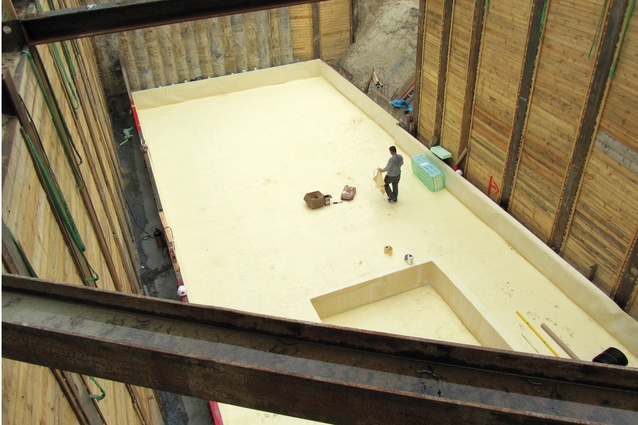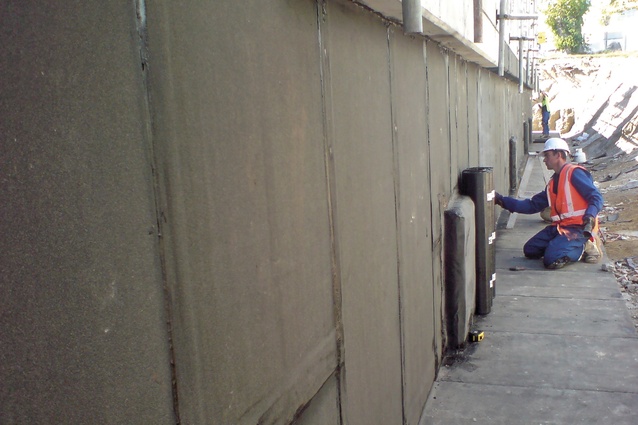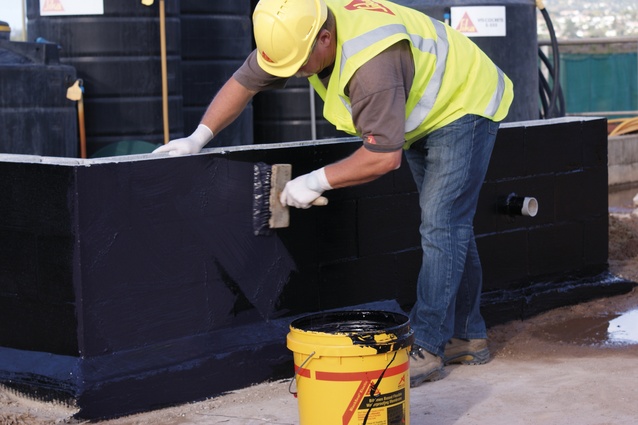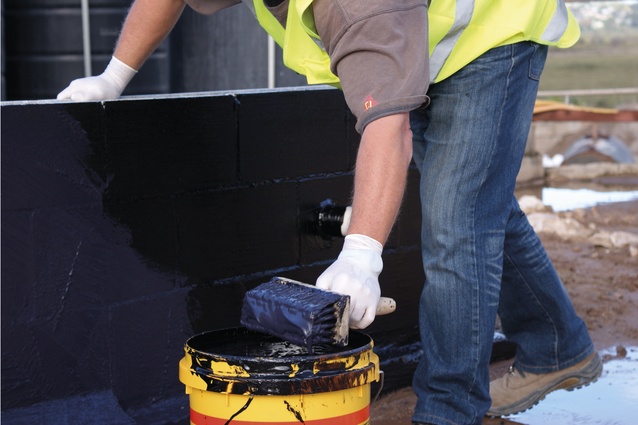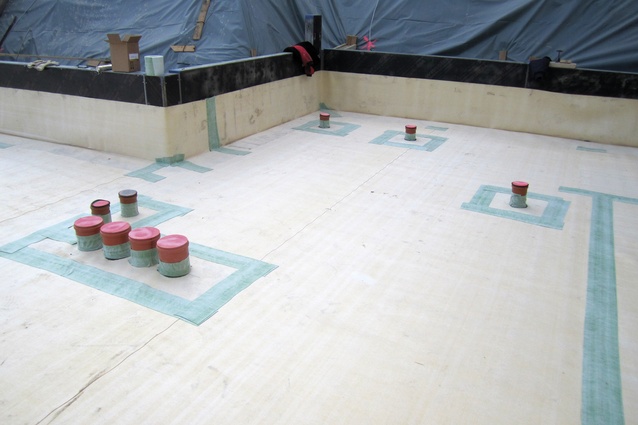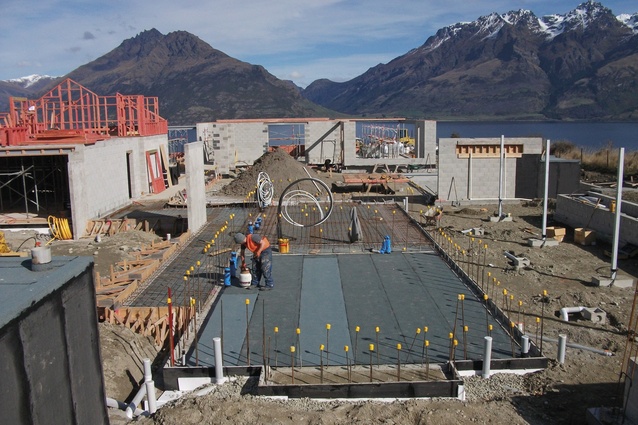Below ground
There are no standards relating to below-ground waterproofing in residential dwellings in New Zealand, and it is not a restricted building activity, despite its critical importance.
There is no standard from which to refer to when installing it, and there is no licence or specific knowledge needed to do so. Below-ground waterproofing is a critical element of moisture resistance, but it is the only one that does not have any standards associated with it. This is a problem, industry experts say, that isn’t going away and one that needs to be dealt with in the short-term.
In 2011 the acceptable solution of Clause E2 (External Moisture) of the Building Code was reviewed and updated, E2/AS1. The clause relates to external moisture and sets out acceptable solutions for residential waterproofing. Prior to 2011 it included a Section 12.0 Basements, which set out the requirements for a damp-proof membrane used to prevent water or water vapour from penetrating the interior face of basement retaining walls. The current version does not include this section.
“Since 2011 there have been no acceptable solutions for below-ground waterproofing in residential properties,” SIKA area manager for Australia and New Zealand Peter Withell said. The lack of standards leaves the industry with no benchmark from which to work. Unlike other aspects of building that are deemed ‘restricted’, i.e. can only be carried out by a Licensed Building Practitioner (LBP), below ground waterproofing can be undertaken by anyone. This means that designers rely on the product suppliers to give them the information they need,” Mr Withell said. “It also means anyone can do it, so you don’t have to have any knowledge or skills to do so. And once you backfill a basement wall it becomes a real problem because it is hard to excavate the material out.”
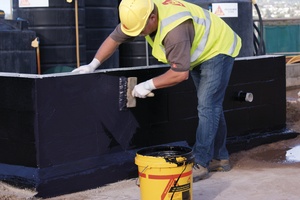
To add to the lack of requirements around below-ground waterproofing, NZS 4229 is somewhat confusing in its interpretation. Although it does contain information relating to the water and vapour-proofing of masonry walls, it is not very comprehensive, SIKA business manager of building systems Mike Edwards said. “It requires the installation of a sub soil drain at the base of the wall, and requires a damp-proof membrane to be applied beneath the on-grade slab and the wall. However, two of the three damp-proof membranes referred to are specifically used under floors rather than on walls,” Mr Edwards said. “Our concern is that the information provided to designers is not comprehensive enough. NZS 4229 is the only document that contains any information on below-ground waterproofing. However, we do not believe that the information and details provided in NZS 4229 are sufficient to ensure a buildable and durable solution.”
While another acceptable solution of Clause E2 of the Building Code, which was introduced in August 2011, E2/AS3, relates to concrete and masonry buildings, it states that construction within the scope of the Cement and Concrete Association of New Zealand Code of Practice for Weathertight Concrete and Concrete Masonry Construction 2011 (CCANZ CP 01:2011) will meet the performance criteria of Clause E2 of the Building Code. However, CCANZ CP 01:2011 does not cover below-ground waterproofing. Clause 1.2.2 Retaining Walls states that retaining walls, including those used in a basement, are not covered. The document refers readers back to NZS 4229.
Ministry of Business, Innovation and Employment (MBIE) acting manager of regulatory implementation Craig Hill said the Department of Building and Housing (now part of MBIE) undertook some policy consultation in mid-2012 relating to below-ground waterproofing. “This included seeking feedback on what new licences should be developed, and why. Tanking/basement waterproofing was one of the areas seen as a priority in that it was seen as work that should be restricted building work (RBW) but is not, as there is no licence covering it” Mr Hill said. “This advice was provided to the Building Practitioners Board last year [2012]. In doing so, the Ministry noted its desire to avoid having a significant number of narrow specialist licences, as jurisdictions like Queensland do.”
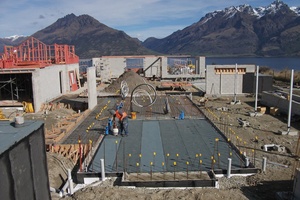
MBIE and the Building Practitioners Board have been discussing the Licensed Building Practitioner Scheme going forward, according to Mr Hill, who said issues such as how to deal with work that should be RBW but had no licence covering it had been discussed. The idea of instigating a formal role for a site licence in RBW had also been discussed, and if it was, what the site LBP would be responsible for. For example, whether or not a site LBP would be able to sign off on work such as tanking, in which case a licence specifically covering it would not be required.
“The board is currently looking at ensuring the LBP scheme in its current state works efficiently and effectively. It has however, asked MBIE to consult with the sector in early 2014 on what role the site licence could play in the RBW regime. It is therefore unlikely that the board or MBIE will agree to any additional licences until the role of the site licence has been reviewed and recommendations made to government.”
Member of the Waterproofing Membrane Association of New Zealand (WMANZ) and managing director of Nuralite Waterproofing Systems, John Simmons, said the lack of standards relating to below ground waterproofing in New Zealand was particularly disappointing, given its critical role in building. However, WMANZ is in the early stages of starting to develop a code of practice to cover below ground waterproofing in both residential and commercial applications. “As a group, this is one of our highest priorities,” Mr Simmons said. “Manufacturers and suppliers will have significant input in the development of this document, which will be distributed widely for comment before it is finalised. It seems that there has been a level of apathy about the importance of tanking; the LBP scheme doesn’t even have a tanking element. Despite this though, over the last three or four years we have found there has been more of a desire to ensure below ground waterproofing is done well, and architects are asking for more robust and quality systems.”
There are various types of below ground waterproofing systems, including liquid applications, bentonite clay systems (in which clay is weaved into a fleecy fabric), and bitumen sheet membranes. Mr Simmons said Nuralite embraced a torch-on bitumen membrane system (Nuraply 3PT), which is known as a ‘positive waterproofing system’ because it is watertight immediately upon installation, unlike other systems that require compression to become watertight. “It is applied as a sheet system - a membrane goes underneath the slab and the footings and is bonded to the slab. A second membrane is then brought down the walls and welded to the membrane under the slab. Tanking has one of the highest risk levels, and needs to have a clear set of regulations and guidance.”
Sika’s belief in the need for below-ground waterproofing to be a restricted building activity is also profound; the company has set up its own training programme for its latest tanking product, Sika Blackseal Elastic. “It doesn’t seem sensible that below-ground waterproofing is not a restricted building activity. If a roof leaks then it is reasonably easy to fix, but if a basement wall or room that is semi-below-ground leaks, it is very difficult to find out where or why it is leaking,” Mr Withell said. “It is a problem that needs to be resolved. Every moisture detail you can think of except for below-ground waterproofing has an acceptable standard.”
Sika will only provide a guarantee for its Blackseal Elastic, a flexible paint-on bitumen membrane, if a licensed building practitioner applies it. “We have set up an online test they need to complete, and as part of the registration for that, they need to provide details of their LBP registration. After completing the training we are comfortable that they have the required amount of knowledge to use the product,” Mr Withell said. “While anyone can buy the product, no guarantee will be provided unless the online test has been completed and the applicator is an LBP.”

